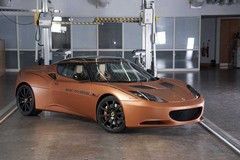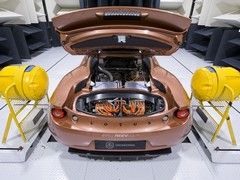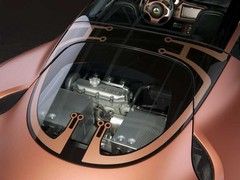Lotus Evora 414E: the tech
A geek's guide to the technology underpinning Lotus's clever range extender Evora, driven recently by PH

Background
In 2006, the Labour Government created the Technology Strategy Board to boost manufacturing innovation in the UK and fund projects that demonstrated this. The 414E is one of these, part of a joint effort between the TSB, Lotus, Jaguar, Infiniti, Xtrac and Evo Electric. It aims to establish a supply base of EV vehicle components in the UK, with smaller companies such as Evo Electric benefitting from the corporate power of the larger partners whilst imparting their expertise.
Range-extender engine
The 414E is different to the Vauxhall Ampera and Toyota Prius Plug-In as its internal combustion engine was designed specifically as a range-extender only, as opposed to borrowing a conventional engine. This means it can be optimised to work only at the speed required to power the generator (3,500rpm), making it more efficient. The Lotus range-extender is a 1.2-litre three-cylinder with 48hp and tri-fuel (petrol, methanol and ethanol) capability. It utilises Lotus's new mono block design, incorporating the block, head and exhaust manifold into one unit. This makes it lighter (51kg) and smaller, which is crucial when you see it crammed in amongst the elctronics in the back of an Evora.
The Evora's range-extender (a prototype whose construction differs slightly from the production version) is modular, which allows parts to be added or taken away without significant internal modifications. Already a supercharged version with 68hp exists for higher-performance installations, whilst a two-cylinder also exists to be used where space is at a premium.
Battery pack
Sitting in place of the rear seats in the Evora 414E, the battery pack weighs 250kg and is rated at 14.9kWh. It comprises 1,780 lithium ion battery cells. Predictably, the charging of these batteries produces a huge amount of heat so there are four cooling pumps to ensure they remain at optimum temperature. A lot of time was invested in a battery management system to support the cooling and also ensure recharging takes place at the correct time.
At present, the range-extender will automatically assist the batteries when they have around 35 per cent charge level remaining. At 100 per cent, the EV range is 30 miles, whilst draining it and the 30-litre fuel tank of the range-extender gives a total range figure somewhere near 300 miles. CO2 emissions are rated at 55g/km
Generator
The generator comes from British firm Evo Electric. It is driven straight off the crank of the range-extender, which saves on weight and cost.
Electric motors
Two synchronous axial flux drive motors also from Evo Electric power the Evora 414E, delivering 207hp and 369lb ft each. They are charged through four inverters (which are the four silver rectangular boxes in the images) and channel power to the road through an Xtrac single-speed transmission. Lotus has invested heavily in ensuring accurate torque distribution between each wheel, meaning that torque vectoring will feature in future developments of the 414E.
At the end of the day it has a mode that lets the car run of batteries "ONLY".Yes i know the tesla is battery only so would have more space for added capacity ,but the evoras range is still **** ,one lap around any major city in the country and that engine is firing back up.
thats why i say ,look at improving battery technology and go into the smaller suppliers.
Gassing Station | General Gassing | Top of Page | What's New | My Stuff






